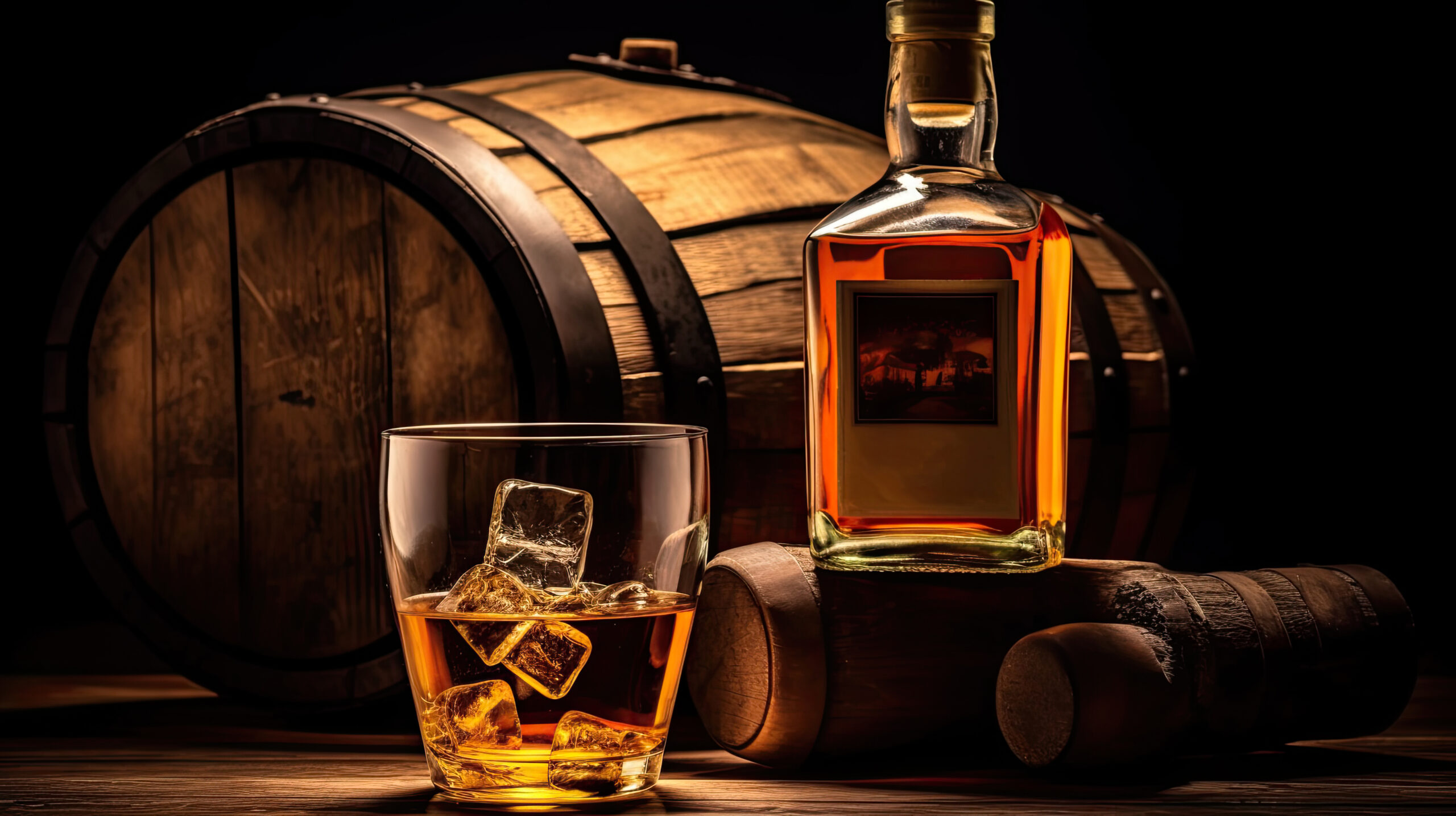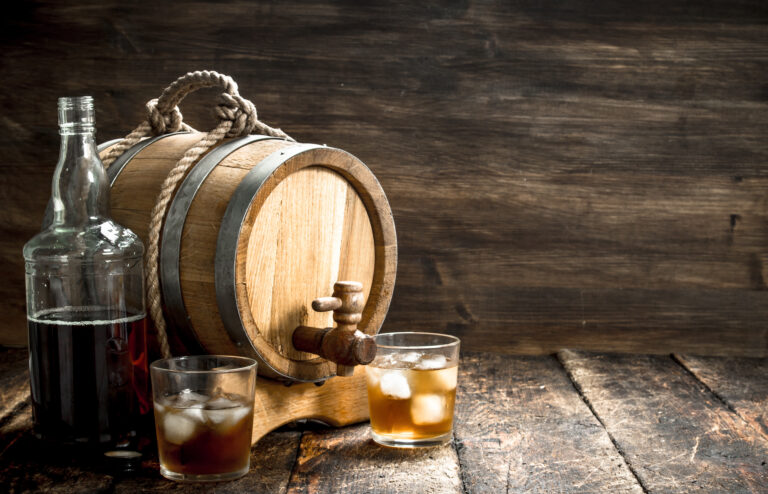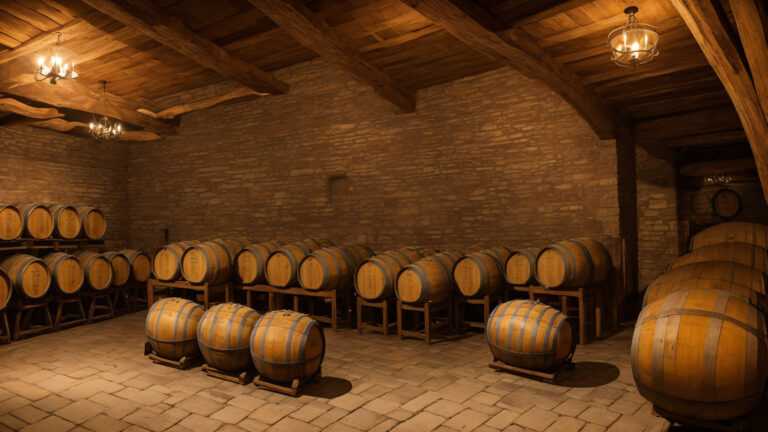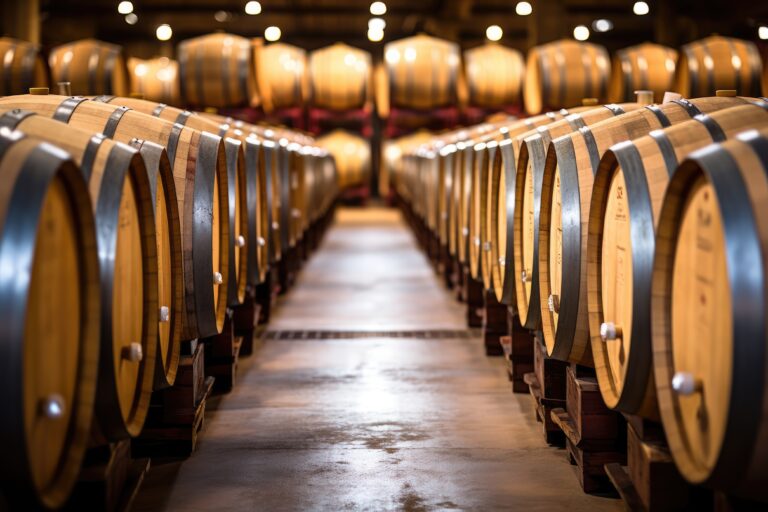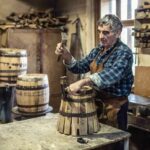Ever wondered how long it takes to age whiskey in those cute little 1 liter barrels you see in craft distilleries or on Pinterest? Well, wonder no more, because we’ve got the inside scoop. Aging whiskey, even in small barrels, is a serious business and not for the impatient. But with some know-how and the right barrel conditions, you can create a smooth, complex whiskey in less time than you might think. Whether you want to age whiskey as a hobby, gift, or side hustle, this guide will walk you through how long you need to age your whiskey to achieve different flavor profiles. By the end, you’ll feel like a bonafide cooper and have a better sense of how long you need to let that precious elixir sit before bottling your very own small-batch, artisanal whiskey.
Introducing Whiskey Aging in Small Barrels
Aging whiskey in 1-liter barrels allows for rapid aging due to the increased surface area to volume ratio. The smaller the barrel, the quicker the aging process. In a mere 6-12 months, you can have a tasty aged whiskey.
The downside is that smaller barrels mean more oxidation and evaporation. You’ll lose quite a bit of the original volume to the “angel’s share.” But what’s left behind will have developed complex flavors fast.
Start with a high-quality white whiskey made from barley, rye, wheat or corn. Pour it into charred new oak barrels. Then comes the waiting.
Sample your whiskey regularly to determine when it reaches peak flavor. Once it has the aroma, color and taste you want, bottle it up. That first taste of your homemade aged whiskey will make all that patience worthwhile.
Aging whiskey in small barrels lets you become a craft distiller right at home. Follow your passion for quality spirits and you’ll be sipping a unique aged whiskey in no time. The possibilities for experimenting with different grains, barrels, and aging times are endless.
Cheers to you, micro distiller! Your custom creations are sure to make you the envy of all your whiskey-loving friends.
The Science Behind Barrel Aging for Whiskey
The longer whiskey ages in barrels, the more complex its flavor becomes. As the spirit interacts with the wood, several chemical reactions occur:
- Oxidation causes the whiskey to mellow and smooth out. Harsh, sharp edges soften and integrate.
- Wood tannins and lignins impart notes of vanilla, caramel, and spice. The charred barrel interior contributes flavors of toast, nuts, and chocolate.
- Evaporation concentrates the whiskey, intensifying all the flavors. Up to 50-70% of the volume can be lost to evaporation over decades of aging.
- Diffusion allows the whiskey to absorb aromatic wood compounds that give aged spirits their distinctive brown color and woody bouquet.
The smaller the barrel, the more quickly these changes happen due to the increased wood surface area to volume ratio. A 1 liter barrel can fully age a whiskey in just 3 to 6 months. The end result is a profoundly complex yet mellow spirit that belies its youth.
While barrel aging is as much art as science, understanding the chemical mechanisms at work helps distillers and blenders make better decisions and ultimately achieve better outcomes. Aging whiskey requires patience, but the rewards of sipping a well-aged spirit are well worth the wait.
How Barrel Size Impacts Whiskey Aging Time
The size of the barrel used to age whiskey has a significant impact on how long it needs to mature. Smaller barrels, like 1 liter barrels, have more surface area so the whiskey has more contact with the wood. This means the whiskey absorbs the flavors and aromas from the charred oak at an accelerated rate.
Accelerated Flavor Infusion
In a smaller cask, the whiskey soaks up flavors from the wood quickly, often within the first few months. The smaller the barrel, the faster this happens. After 6-12 months in a 1 liter barrel, the whiskey can take on a very woody, almost over-oaked flavor. For the best results, you’ll want to sample the whiskey regularly to avoid over-aging it.
The smaller the barrel, the more often you need to check on the aging whiskey. Given the rapid flavor infusion in a 1 liter barrel, aging for longer than 12-18 months is not recommended and could result in an unpleasantly bitter, tannic flavor. The sweet spot is usually between 6 to 12 months for a balanced, full-bodied flavor in a small cask.
Keeping a close eye on your 1 liter barrel and bottling at the right time is key to crafting a smooth, flavorful whiskey. With the accelerated aging that occurs in miniature casks, less time is more. While aging in a larger barrel could take years, a few months in a 1 liter barrel may be all your whiskey needs to reach perfection.
Recommended Aging Times for 1 Liter Barrels
Aging whiskey in small 1 liter barrels allows for rapid flavor development. However, be careful not to over age the whiskey in these small barrels.
Check on your whiskey regularly after the first month of aging. At this point, you’ll notice the whiskey has taken on a light golden color and aromas of vanilla and oak have developed.
Taste the whiskey after 2 to 3 months to determine if it has achieved your desired flavor profile. The whiskey can become quite oaky and dry if aged for too long. Most people find the optimum aging time for a 1 liter barrel to be 3 to 6 months.
Once the aging is complete, bottle your whiskey right away. The small barrel size means oxidation occurs quickly, and the flavor can start to deteriorate within a week or two after removing from the barrel.
While aging times can vary depending on personal taste, keeping a close eye on your 1 liter barrel aged whiskey will allow you to bottle it at exactly the right moment. Aging whiskey is part art and part science, so have fun with the process and enjoy the results!
Tasting Your Whiskey Throughout the Aging Process
As your whiskey ages in the 1 liter barrel, be sure to taste it regularly to monitor how the flavor develops. Around 3 months in, you’ll notice the harsh, bitter notes of the new make spirit start to mellow and round out.
6 Months
Six months is a good time for your first real taste test. The whiskey should have a smooth and approachable quality by now, with pronounced caramel and vanilla notes coming through from the charred oak. It may still be a bit rough around the edges, but you’ll get hints of the complex flavors to come.
9-12 Months
Between 9 to 12 months, the whiskey reaches an important stage. The oak has had time to impart a lovely golden hue and aromas of tropical fruit, nuts and warm spices should emerge. On the palate, you’ll find a balance of sweetness and oak with a medium body and a pleasantly warming finish. For many, this “sweet spot” yields an ideal sipping whiskey.
18-24 Months
If aged for 18-24 months, the whiskey takes on a darker, reddish-amber color and develops a fuller body. The oak flavors intensify, with notes of vanilla, caramel and dried fruit complemented by a touch of tannin on the finish. While delightful to some, these bold oak flavors may be too overpowering for others. At this point, it comes down to personal taste to determine if it’s best enjoyed now or aged a bit longer.
The key is tasting often so you can bottle your whiskey at precisely the right moment for your preferences. Aging in small barrels means the whiskey develops character rapidly, so staying on top of its progress will allow you to craft a spirit that you can proudly call your own.
Maximizing Flavor Development in a 1 Liter Barrel
To maximize the flavor development in your 1 liter barrel, there are a few key things you can focus on:
Temperature
Aging whiskey in a small barrel means temperature has an outsized impact. Keep your barrel in a place with consistent, moderate temperature, away from extreme heat or cold. Fluctuating temperatures can negatively affect the aging process.
Rotation
Regularly rotating your barrel, like once a week or every other week, helps ensure even exposure of the whiskey to the wood. This maximizes the flavor and color compounds that are extracted, leading to a richer, more complex flavor profile.
Time
Be patient and resist the urge to bottle too early. Unlike large barrels where whiskey can age for years, a 1 liter barrel accelerates the aging process. But to develop a nice balance of flavors, you still want to age for at least 3-6 months. Many distillers recommend starting with a shorter aging period, 3-4 months, and then tasting periodically to determine if additional aging time is needed.
Wood Selection
The type of wood used for your small barrel has a significant impact on the flavor. Oak barrels, like American white oak or French oak, are most common and impart classic bourbon or scotch flavors. Other woods like maple or hickory will produce different flavor profiles. Choose a wood that complements the natural flavors of your spirit.
With some TLC and patience, a 1 liter barrel can produce an amazing, full-flavored aged spirit. Paying close attention to these factors will help you craft a whiskey with a flavor profile tailored to your tastes.
Should You Rotate Small Barrels During Aging?
Should you rotate small barrels during aging? For 1-liter barrels, rotating is not necessary and can actually be detrimental.
These tiny barrels expose the whiskey to a lot of wood surface area, so the spirit can pick up oak flavors and aromas very quickly. Flipping the barrel would expose the whiskey to a new wood surface, restarting the aging process and potentially creating an imbalanced flavor.
It’s best to leave 1-liter barrels stationary while aging. Let the whiskey mature at its own pace. Keep in mind that due to their small size, aging times in 1-liter barrels are typically just 3 to 12 months for most styles of whiskey to reach full maturity.
Be patient and let the oak and whiskey mingle over time. Your finished spirit will develop a well-rounded, harmonious blend of flavors when left undisturbed. For the best results, find a cool, dark place to store your mini barrel and leave it alone as much as possible during aging.
Resist the temptation to frequently sample from the barrel. Only draw small amounts for tasting, if at all. The more you open the barrel, the more oxygen exposure and evaporation will affect the aging whiskey.
Keep your hands off and let the magic of maturation happen! Your patience will be rewarded with an extraordinary, fully-aged craft spirit.
Storing Your Barrel Between Aging Cycles
The time between barrel fills is an important factor in aging whiskey. During this rest period, the whiskey continues to absorb flavors and mellow in the barrel. For a 1 liter barrel, a few weeks between fills is typical.
Storage Conditions
Keep your barrel in a cool, dark place away from direct heat or sunlight. A basement or closet will work well. Temperatures between 55 to 65 F are ideal for aging whiskey.
Checking on Your Whiskey
Every few weeks, check on your barrel to make sure the whiskey level hasn’t dropped too low, indicating a leak. You should also check to see if the barrel needs re-sealing or re-waxing to prevent oxidation. Give the barrel a gentle roll to moisten the inside of the barrel. This helps the whiskey absorb more oak flavor.
Deciding When to Re-Fill
Taste your whiskey after a minimum of 2 to 4 weeks to determine if it’s ready to bottle or needs more aging. If it still tastes harsh or lacks oakiness, re-fill the barrel and continue aging. Check again in 2 to 4 more weeks. Repeat this until the whiskey reaches your desired smoothness and flavor.
Bottling Your Whiskey
Once aged to your satisfaction, bottle your whiskey to stop the aging process. Filter the whiskey through a coffee filter or cheesecloth before bottling to remove any barrel char sediments. Your homemade aged whiskey is now ready to enjoy! The aging and bottling process can be repeated with the same barrel.
How Long to Age Whiskey in a 1 Liter Barrel FAQs
How Long Should You Age Whiskey in a 1 Liter Barrel?
Aging whiskey in a small 1 liter barrel speeds up the aging process. The smaller the barrel, the more contact the whiskey has with the wood. This results in faster flavor extraction from the wood.
You’ll want to check on your whiskey’s progress regularly. Every few weeks, pull a small sample and have a taste test. Once it reaches your desired flavor, you can bottle it. For most people, aging in a 1 liter barrel takes 3 to 6 months.
Some factors that determine aging time:
- The type of wood used, like charred oak or maple. Oak is most traditional and imparts more flavor.
- The level of char on the inside of the barrel. More char means faster aging.
- The barrel’s location. A warmer spot will age faster than a cooler one.
- Your personal taste preferences. Sample often so you can bottle at peak flavor.
- The type of whiskey. Bourbon ages faster than rye or single malt.
Don’t leave your whiskey aging for too long or it can become over-oaked, meaning it extracts too much of the wood flavors and can taste bitter. It’s best to bottle once it reaches a flavor you enjoy. If unsure, you can always age another small batch for a shorter time.
With some experimenting, you’ll discover how long it takes to age your favorite whiskey in a 1 liter barrel. The key is tasting frequently so you end up with a product you’ll love and want to share with friends. Cheers!
Final Thoughts
So there you have it, the basics on aging whiskey in a small barrel. While aging for 6-12 months will give you a nice sipping whiskey with oak notes, aging longer opens up more complex flavors. But be careful not aging too long, or it can get overpowering. The key is tasting frequently so you can bottle at the peak of flavor for your tastes. Home aging whiskey is a fun hobby and you get to craft a spirit to your exact preferences. Now get yourself a barrel, source some whiskey, and start experimenting. Before you know it, you’ll have a house specialty aged whiskey to enjoy for years to come!
